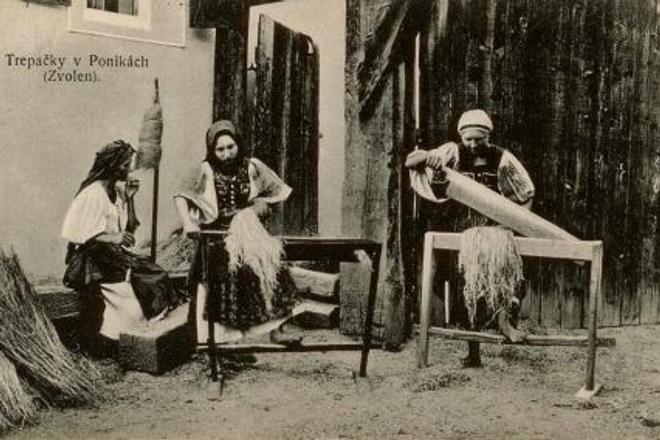THE MAGIC of the postcards made by Slovak ethnographer and photographer Pavol Socháň lies somewhere between his delicate stylisation and the freedom he allowed his subjects when photographing them.
An interesting aspect of Socháň’s photographs was that, even more than a century ago, he felt that the world he sought to capture was disappearing. Socháň’s photographs depict people in the countryside, clad in folk costumes, going about their daily lives in their natural environment.
As one can see in this early 20th-century postcard, Socháň was interested in the crafts of the period. Here we see three women working outside a house in Poniky, in the Zvolen region. They are each operating a “trlica”, which was used to separate the woody parts from hemp and flax plants. The woman on the right is holding a blade in her hand called a “trlo”, which was attached to the trlica at one end so that it could be moved up and down to process the hemp or flax.
In Slovakia, hemp was one of the oldest and most widely used plants for purposes other than food. It was grown mainly to produce fabric for making clothes and rope, and oil was extracted from the seeds.
Záhorie was one of the biggest hemp-producing regions, and it exported hemp to Vienna and mining towns in central Slovakia.


